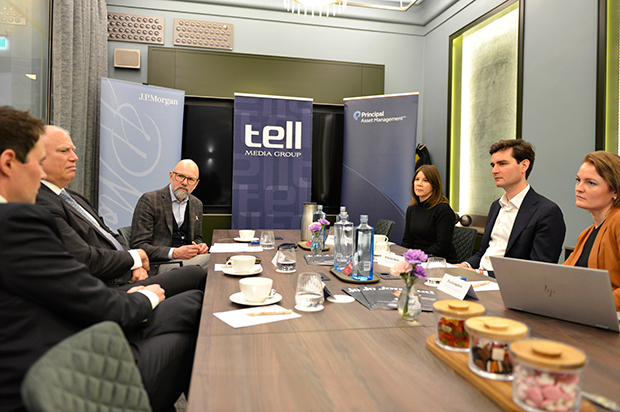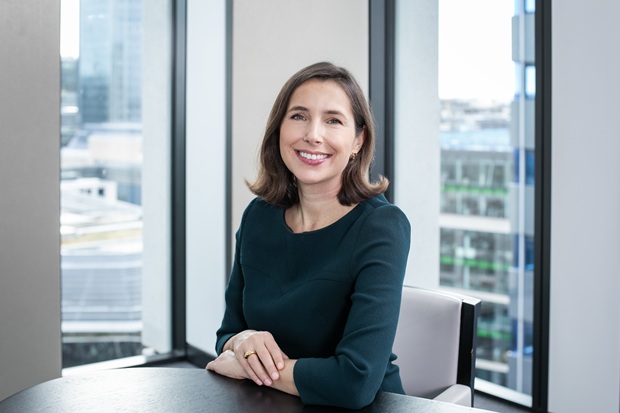
Optimism returning but challenges still remaining
At the end of February, Tell Media Group, in cooperation with JPMorgan Asset Management and Principal Asset Management, sat down with Finnish institutional investors to discuss opportunities and challenges in real estate.
With the real estate market having gone through some difficult times, the discussion kicked off with the investors sharing their general sentiment towards the asset class.
EVA LEMPINEN: “I think it’s best described as cautiously optimistic. But it of course depends on which country and which sector you’re talking about. The market is very polarised, but the general sentiment is that things are getting better. There’s light at the end of the tunnel.”
MARKUS NORDBERG: “I would agree with that – especially regarding the polarization and I think as real estate investors, we need to identify and understand that polarisation. The European and US markets currently differ sector-by-sector and we’ve also seen a different pace with regard to rate cuts. So different markets and different sectors are not moving in sync. We must also remember that real estate is a cyclical asset class and we’ve been through a significant change in the interest rate environment. With rate cuts now being made, I think this is a very interesting point in time. The challenge is that if you wait for too long, then it’s too late and the best opportunities are gone.”
NIKLAS TELL: ARE WE SEEING LIQUIDITY COMING BACK TO THE REAL ESTATE MARKET AND IS THAT THANKS TO THE INTEREST RATE CUTS?
PETER REILLY: “Absolutely. Liquidity is a function of investors’ comfort with pricing and when they’re not comfortable with pricing, they’re not going to make investment decisions. While interest rates were going up in response to inflation and a number of other geopolitical events, investors were nervous about where it would end and I think more recently, they have gotten a sense that perhaps the low point in the valuation cycle is behind us. That means investors are going to get more comfortable transacting and when that starts to happen, I think we’ll see a more normalised market.”
SEBASTIAN DOOLEY: “I think cautiously optimistic definitely is how we’re viewing things. Last year, there was a lot of excitement around interest rates coming down, which probably slightly overestimated what was going to happen in reality. From our perspective, that made it very difficult to transact as sellers were expecting to get ridiculous pricing. Now we’re seeing pricing that actually makes sense and we’re able to move forward so hopefully liquidity starts to come back.”
NIKLAS TELL: WHERE ARE YOU CURRENTLY THE MOST ACTIVE AND WHAT ARE YOU LOOKING AT RIGHT NOW IN TERMS OF GEOGRAPHIES AND SECTORS?
EVA LEMPINEN: “In Finland, we do direct investments and we’re active both as buyers and sellers but very selectively. In Finland, our investments are more on the core side. When we go outside Finland, we look more for value-add type of investments and we do think it’s a really good time to invest. One reason is that there’s a lack of capex capital available for some owners and they need to sell, which means they accept the pricing that’s offered to them. You still need to be selective and you also need to decide which sectors you would like to focus on.”
MARKUS NORDBERG: “First of all, Mandatum is not really a core type of investor. We’re looking for active value creation, which could be value-add or core-plus type strategies. Some we will manage in-house and for investments outside our home market, we will use external managers but always with that active focus. Geographically, we’re mainly investing in Europe and we’re currently seeing interesting pockets of supply and demand imbalances, which are situations that we typically like to explore.”
PETER REILLY: “If you look at property market dynamics, the sectors that have been disrupted the most and where there’s the most uncertainty is probably where you get the best pricing. If you go back 20 years, that was the retail space where the whole sector was disrupted by technology. Today, it’s the office sector that’s also being disrupted by technology but for different reasons. On the one hand, our view would be that as a whole, the office markets are going to struggle and continue to struggle until all this restructuring gets sorted out and that could take anywhere from 10 to 20 years. However, in the meantime, there are lots of opportunity in the office sector and the magic or the art in our job as asset managers is to differentiate between that office that is going to do really well and those that it would be unwise to spend money on. That skill is going to be very valuable for the next 10 years and will create a lot of opportunities.”
SEBASTIAN DOOLEY: “I think a lot of the returns over the next few years is going to come out of rental growth, so it’s key to figure out ways to drive that rental growth. That means active management will be important and that brings you to the value-add or core-plus strategies. It’s also about matching the right asset class in the right location. Two of our big focus areas at the moment are hotels and data centres. If you look at Germany, from a data centre perspective, we see some incredibly compelling opportunities to invest there. However, from a hotel perspective, we see almost no opportunities there. It’s the same economy, the same people, the same markets, but very different asset classes and very different demand drivers. It really is about selecting the right asset classes, selecting the right markets and really understanding the dynamics of what’s driving each asset class in each market.”
NIKLAS TELL: WHEN YOU SIT DOWN IN MEETINGS WITH INVESTORS, ALSO OUTSIDE THE NORDICS, WHAT ARE SOME OF THEIR TYPICAL QUESTIONS AND CONCERNS?
PETER REILLY: “I think it starts from the top level. When are the value drops going to stop and when are we going to see positive returns from real estate? There are also discussions around valuations, which of course is important if you’re investing through funds because valuations tend to lag both on the upside and the downside. Investors like to understand when the valuers have caught up with the market and when it’s right to jump back in again. The other thing investors are really focused on is the office market because it’s such a significant part of the real estate market.”
SEBASTIAN DOOLEY: “I think it slightly depends on who you’re talking to. We’re seeing European investors still being slightly more cautious on real estate as a whole whereas our Asian investor base came back to the market a couple of years ago or a year ago. The fact that interest rates in the eurozone are relatively lower than other locations does help and that seems to be driving some of the capital flows thanks to the distribution pickup that happens when you hedge currency risk. Interest among US investors have definitely picked up and they are willing to invest, so the discussions there are more about understanding the nuances of different markets and how to be positioned. In general, I would say that the conversations we’re having with investors outside of Europe is more about how we can execute and how we can drive value rather than convincing them to invest in Europe.”
CAROLINE LIINANKI: EVA, WHAT ARE YOU LOOKING FOR IN A REAL ESTATE MANAGER?
EVA LEMPINEN: “Some obvious things are track-record and experience. For value creation strategies, they would also need to have local teams and they need to have relationships with local players because that means they will be able to buy well. They also need to understand the market of course and I need to be comfortable and believe that the team knows how to create value in the asset. What kind of actions needs to be taken and how much money will they need to spend? What kind of return are they targeting? In the end, it’s very hands on and it’s always helpful visiting some assets to understand how they do things.”
MARKUS NORDBERG: “I agree – clearly important factors. In our process, given the importance of the active value creation, we try to dig very deep into the deals that the manager has done previously. We always like to understand each and every investment and when you’re going through those opportunities and the business plans, we get a better feeling for the real skillset of the manager. We also put a lot of effort in understanding the ESG know-how of the manager. While most managers seem to be doing a good job, you do find differences if you dig deeper and talk about individual real estate investments and ask what they have done to improve energy efficiency or how they cater for their tenants.”
… continued … the roundtable discussion was originally published in issue 02, 2025 of Nordic Fund Selection Journal and a PDF of the complete story can be found here.
//Participants
- EVA LEMPINEN, Portfolio manager at OP Real Estate Asset Management
- MARKUS NORDBERG, Head of private real estate at Mandatum Asset Management
- PETER REILLY, Portfolio manager and senior advisor for the real estate Europe group at JPMorgan Asset Management
- SEBASTIAN DOOLEY, Senior fund manager at Principal Asset Management



